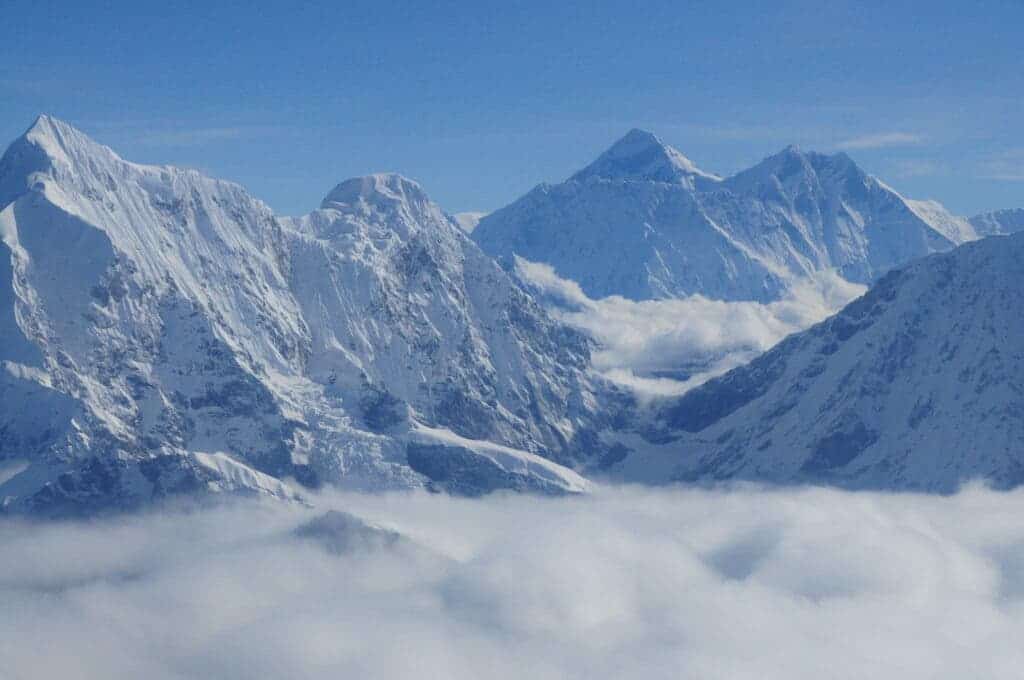Two billion people that rely on waters from Himalayan glaciers for everything from drinking to agriculture could soon be severely affected as the massive blocks of ice in the mountain range are melting at an “exceptional rate”, according to a new study. Ice loss is one of the direct consequences of man-caused global warming, and it could jeopardize water security for vast swaths of the planet.

The Himalayas are a massive mountain system that spans around 2,500 kilometers (1,500 miles) and is home to over 32,000 glaciers. Only Antarctica and the Arctic has more ice and snow than the Himalayas. But unlike the Antarctic glaciers, the ones from the Himalayas supply water for important river systems and directly and indirectly support the livelihoods of millions in the area.
As in other parts of the world, the glaciers in the Himalayas have been losing ice as temperature rises. But it seems they are affected more severely than other parts of the world. In a new study, researchers from UK universities found that they have lost ice ten times faster over the last few decades than on average during the last glacier expansion 700 years ago.
“Ice is now being lost from Himalayan glaciers at a rate that is at least ten times higher than the average rate over past centuries. This acceleration in the rate of loss has only emerged within the last few decades, and coincides with human-induced climate change,” Jonathan Carrivick, corresponding author in the study, said in a statement.
Impact on the Himalayas
In the study, the researchers did a reconstruction of the ice surfaces and the size of 14,798 glaciers in the Himalayas during the last glacier expansion – also known as the Little Ice Age. They estimated that the Himalayan glaciers have lost about 40% of their area, going from 28,000 squared kilometers back then to 19,600 squared kilometers of ice as of 2021.

During that period, the glaciers have also lost between 390 and 586 cubic kilometers of ice – which is the equivalent to all the ice contained today in Scandinavia, the central European Alps and the Caucasus combined. All that melted ice has raised sea levels on a global scale between 0.92 and 1.38 millimeters, according to estimations by the researchers.
This has major implications for all regions surrounding the Himalayas (which is a big chunk of Asia), including increased flooding due to more water in the glacier-fed rivers; more extreme weather events; changes in the monsoon, which supports the livelihoods of millions of people; lower agriculture yields; and change in energy production due to dams getting less water.
The team used digital elevation models and satellite images to reconstruct the ice surface of the Himalayan glaciers. The images showed ridges that mark the former glacier boundaries. The researchers used the geometry of the ridges to estimate the former glacier extent and ice surface elevation and then compared this to glaciers now, noting the differences.
The study also showed that glaciers are losing mass faster in the eastern region of the Himalayas. This is because of differences in the geographical features on the mountain range and their interaction with the atmosphere. Glaciers are also declining faster where they end in lakes rather than where they end on land, the researchers found.
“People in the region are already seeing changes that are beyond anything witnessed for centuries. This research is just the latest confirmation that those changes are accelerating and that they will have a significant impact on entire nations and regions,” co-author Simon Cook, lecturer in the University of Dundee, said in a statement.
The study was published in the journal Scientific Reports.


